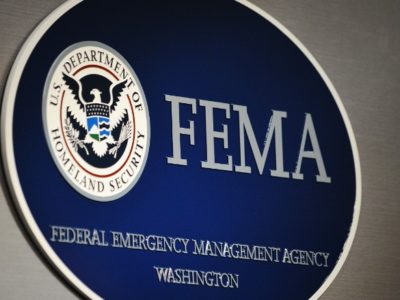I Suppose We Can Just Hope That EIA Is Wrong
The federal estimate of energy-related carbon emissions in 2050 should get our attention.
The U.S. Department of Energy’s Energy Information Administration (EIA) issues projections for future energy use across all sectors of society. They aren’t really predictions of our energy future — they are more like conversation starters. In fact, some researchers suggest that EIA shows a consistent bias by forecasting more energy use than actually occurs.
Yet, EIA’s stock-in-trade is to estimate what might happen tomorrow if rules and policies stay as they are now and current trends in innovation continue. And that can often start one heck of a conversation.
Consider, for instance, EIA’s most recent business-as-usual estimate of how annual greenhouse gas emissions from energy use in the U.S. might change between now and 2050. EIA says that….well, those emissions levels will be the same in 2050 as they are now. That means that despite all of the existing policies promoting renewable energy, despite the retirement of so many coal-fired power plants, despite dramatic improvements in the efficiency of energy use, and despite existing transportation fuel efficiency standards, we might not see much more than a dent in the curve reflecting energy-related greenhouse gas emissions by 2050.
EIA would be the first to tell you that more rigorous scientific study is required, but let’s reflect on what this projection would mean if it came true. The long-standing argument has been that, in order to stabilize climate change, we would have to reduce greenhouse gas emissions to 80% below 1990 levels by 2050. Recent studies suggest that reductions actually have to be greater than that and have to happen more quickly. So what do we make out of the possibility that – come 2050 – we might be spewing just as much energy-related carbon as we do now?
The good news is that by 2050, while we could be driving more, using more appliances, and burning more electricity than we do now, we won’t be accelerating our release of greenhouse gases. That reflects much success in improving efficiency and in substituting cleaner fuels for dirtier ones. Obviously, we need many more successful initiatives. Here are some of the big pieces:
- Three states have now committed themselves to relying only on renewable or otherwise carbon-free electricity by the late 2040s. Forty-seven states, the District of Columbia, and the federal government yet to go. There must be a concerted effort not only to add renewables to the grid, but to actively phase out the existing coal and gas plants.
- As we move toward a greener grid, we need to encourage more people to use power when the cleanest resources are available. We are just getting started – with time-sensitive electric meters and time-varying rates, battery storage, and other strategies. As one keen observer has put it, we are moving from an era of predicting demand and managing the power supply to an era of predicting the power supply (from sources such as solar and wind) and managing demand.
- For some time, energy utilities have been directed to help customers to be more efficient in their use of energy by changing out appliances and lightbulbs. This has just been chipping away at the problem. Increasingly, people are working to transform markets so that consumers will search out and buy the most efficient products. In addition, appliance efficiency standards and more ambitious building standards mean that energy guzzlers will not have a place on store shelves.
- Most automakers have now committed themselves in a big way to producing electric vehicles. This has been triggered in no small part by generous federal tax credits and many state-based incentives. Those tax credits and other incentives need to be extended and expanded. Even more important would be the dramatic expansion of electric vehicle recharging facilities. To overcome range anxiety, drivers need to be confident that a recharging station will be available when they need it and that it will do its job quickly. In this regard, have a long way to go. Electrifying rail and bus travel is another big piece of the puzzle.
- We need to stop using fossil fuels in our buildings. Currently, most of that fuel is natural gas. We can require that new buildings be much more efficient and must rely only on electricity. But we also have to aggressively attack the even greater challenge of moving fossil fuels out of our existing buildings. The technology exists to do the job, but the economic challenges are great. As we switch to cleaner electric power, this is the energy source that should serve our heating and cooling needs.
- There are many other critical areas of action to reduce greenhouse gas emissions, such as land use changes, transit expansion, strategic density, agricultural practices, soil management, forest retention and wildfire management. Each area has a long story tell – more than can be addressed here.
More than ever, we know what to do to ensure that reality looks better than the business-as-usual future that EIA identifies. Getting there is a matter of political will and constant innovation. EIA helps start the conversation. We all need to take it from there.







Reader Comments